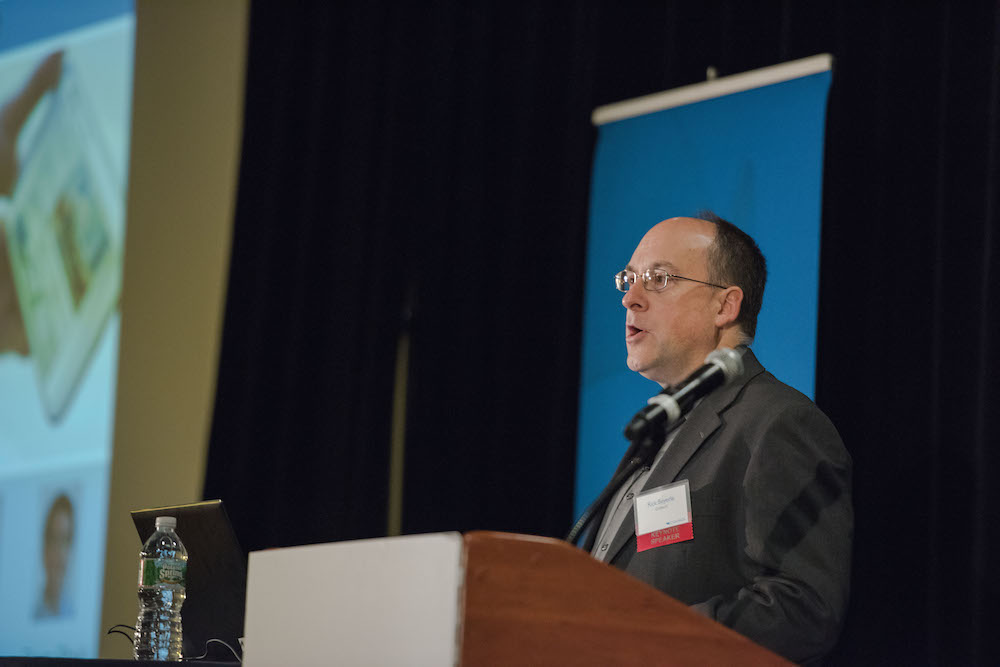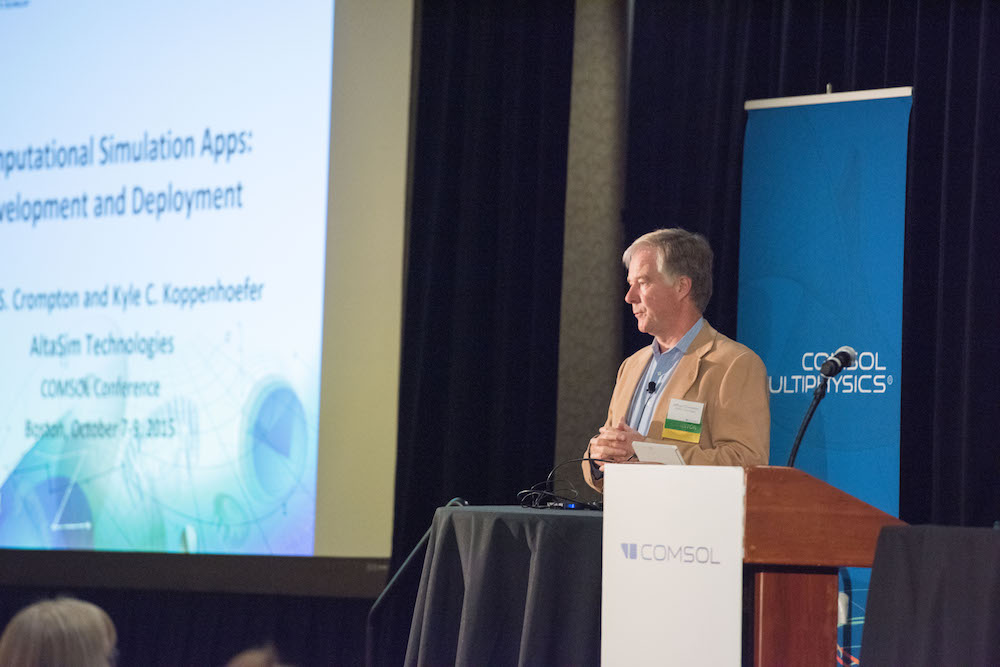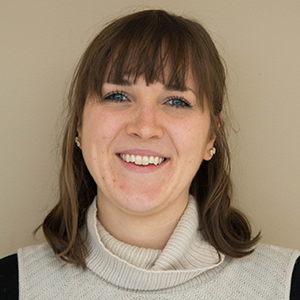
The first stop of the COMSOL Conference 2015 in Boston featured industry talks by speakers from GrafTech Innovation and Technology Center and AltaSim Technologies. These keynote speeches offered a look at some of the innovative uses of COMSOL Multiphysics, including the Application Builder.
GrafTech Innovation and Technology Center
Richard Beyerle of the GrafTech Innovation and Technology Center was the first keynote speaker to take the stage. Drawing a parallel between the broad capabilities of COMSOL Multiphysics and the broad forms and applications of carbon and graphite, Beyerle focused his presentation on three particular examples of graphite analysis at GrafTech.

Keynote speaker Richard Beyerle of the GrafTech Innovation and Technology Center.
Analyzing and Optimizing Graphite Properties
The first case Beyerle presented involved optimizing the thickness of the insulation in a 3000°C graphite induction furnace. Insufficient insulation can cause inefficient heat loss, while too much insulation can result in higher current draw. COMSOL Multiphysics helped strike a balance by identifying the ideal insulation thickness.
How GrafTech uses simulation, e.g. 1: Optimize the insulation layer around a 3000°C graphite induction furnace. #COMSOLconf15
— COMSOL (@COMSOL_Inc) October 8, 2015
For the second example, Beyerle discussed the role of simulation in determining the power profile for crystal boule growth in a furnace heated by a graphite susceptor. GrafTech’s investigation was led by the question: “What heater power profile will yield the best crystal growth?” With COMSOL Multiphysics, they quickly simulated several power profiles. The results provided a realistic power profile that was used for crystal growth in a commercial furnace.
GrafTech e.g. 2: Calculate a growth profile for crystal boules in a crucible heated by a graphite susceptor. #COMSOLconf15
— COMSOL (@COMSOL_Inc) October 8, 2015
The last case focused on thermal management in electronics, particularly the challenge of choosing the optimal graphite foil to dissipate heat in a smartphone or a tablet computer. Multiple heat sources are integrated into smartphones, from the power converter to the LED. Graphite foil is an ideal material to spread heat within these devices, as it is thin, efficient, and lightweight. Although the properties are proven in a laboratory setting, simulating them in complex shapes can be challenging. COMSOL Multiphysics provides the mesh and material properties control that is necessary for this complex modeling.
GrafTech e.g. 3: Select the thinnest graphite foil to spread the heat generated in a smartphone or tablet computer. #COMSOLconf15
— COMSOL (@COMSOL_Inc) October 8, 2015
At GrafTech, simulation analyses have been used to determine the optimal grade of the graphite heat spreader. As Beyerle noted, the Application Builder presents an opportunity to extend this properly meshed and constructed model to customers and applications engineers around the world.
AltaSim Technologies
The last keynote speaker at the conference was Jeff Crompton of AltaSim Technologies. The focus of his industry talk was the evolution and benefits of computational analysis, with particular reference to the development and distribution of simulation apps.
Simulation Apps Are Shaping the Future of Virtual Prototyping
Through testing and evaluation, products and technologies have experienced gradual improvements over time, from increased quality to lower production costs. As the complexity of these products and technologies continues to grow, performing tests via prototypes becomes more time consuming and expensive. That’s why, as Crompton mentioned, many organizations have turned to computational analysis as a means of product development. This shift toward virtual prototyping has led to better quality and higher productivity, all while reducing the resources and costs required.
Jeff Crompton of @AltaSim: "Use computational analysis to reduce production costs and improve quality and meet launch times." #COMSOLconf15
— COMSOL (@COMSOL_Inc) October 9, 2015
Looking toward the future of virtual prototyping, Crompton spoke about extending the use of computational analysis and increasing the user base of simulation power. Simulation apps are helping to deliver this potential. Apps, as he stated, offer a variety of benefits, as they are easier to use than CAD embedded tools and can make expert knowledge widely available across an organization or a country at any given time. “Simulation can be for everyone and is for everyone,” Crompton said.
While AltaSim is working on creating apps for a variety of purposes, from additive manufacturing to CMC processing, Crompton selected their heat sink app for a demonstration during his presentation. The purpose of the app is to optimize the configuration of a heat sink for electronic circuits to ensure their long-term operation. This app is currently being deployed commercially, as it can be used by a wide range of individuals and companies to easily run their own simulation tests.
In an upcoming blog post, we will provide a more in-depth look at AltaSim’s vision of the future of simulation as well as their use of apps.

Keynote speaker Jeff Crompton of AltaSim Technologies.
A Big Thank You to Our Industry Speakers
We would like to thank each of the keynote speakers from the COMSOL Conference 2015 Boston for sharing their innovative applications of COMSOL Multiphysics. We hope to see you all at the conference in 2016!



Comments (0)